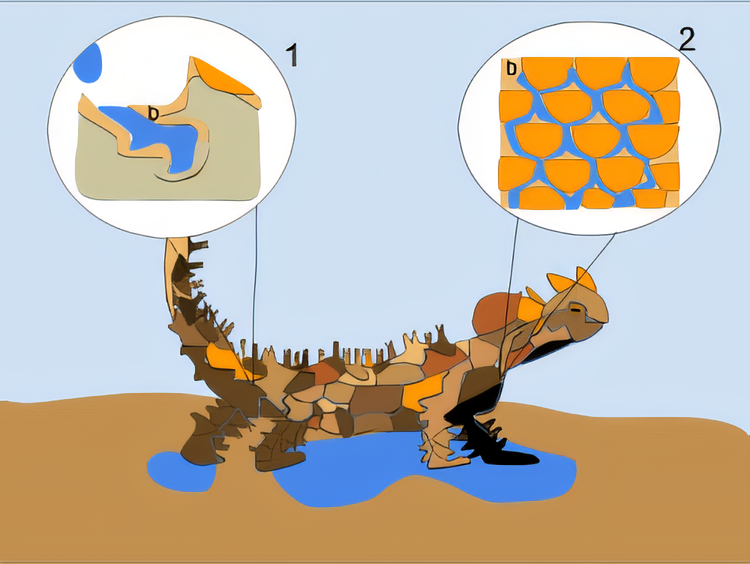
Thorny Devils
When it comes to Australia, the first devil that comes to mind is probably the Tasmanian.
But there’s a far more populous down-under denizen, one who roams large swaths of the Outback. And, though the Tasmanian devil garnered its name largely thanks to its ethereal vocalizations, many humans find the critter closer to adorable than fiendish. This other devil, on the other hand, certainly looks the part.
Behold the fantastically spicate thorny devil:

Covered in horns and prancing around the hellish soils of Australia, the thorny devil certainly lives up to its moniker.
Moloch horridus is a species of lizard endemic to the Australian continent, and the only member of its genus. This scientific name is quite apt. Horridus is Latin for horrid, bristly, rough, or dreadful. Moloch is biblical; traditionally, scholars viewed the noun as a reference to a Canaanite god to whom people offered child sacrifices. Modern interpretations wonder whether the term refers to the actual sacrifice, rather than a deity. Either way, Moloch, though not a demon in the strictest sense, has often been portrayed as a bull-headed idol since the medieval era. The figure shows up in some of literature’s biggest hitters, including Milton’s Paradise Lost, in addition to works by Gustave Flaubert and Allen Ginsberg.
So, dreadful Moloch makes a lot of sense as scientific nomenclature for a thorny devil.


This lizard appears Molochian, but the reality is far less insidious.
The thorny devil subsists entirely on ants, and its intimidating appearance is a defensive evolution. The spikes help defend against attacking birds and goannas, in addition to making the devil hard to swallow.
This adaptation might be necessary, as the devil’s mode of walking makes it simultaneously adorable and vulnerable:
It employs both traditional and creative camouflage to remain hidden from predators, as well. Its coloration changes during the year to blend in with the desert landscape, but another attribute really hammers home how non-aggressive this supposed hellion is.
Embedded in its spiky frame is a false head. When afraid, the devil tucks its pate between its legs, but a piece on its neck pops up, portraying a well-armored “head” toward the attacker!

If a spike-covered lizard with a fake head and a bizarre gait isn’t enough for you, the thorny devil has another attribute with wow-factor.
Living in the harsh Outback requires ingenuity, especially when it comes to water.
The thorny lizard is one of a few species across the planet that employs a special method of mining every possible drop of water from the unforgiving desert. The devil’s epidermis is hydrophilic, a term that literally means “water-loving.” Its scales, including the spikes, form an overlapping system of water transport. When the skin contacts water, the hydrophilic structures channel the liquid via capillary action to the lizard’s mouth. The devil can maximize water intake from rare rainy periods, but also “sucks” it straight from plants and the air during the desert’s morning dews. Taking its power to another level, the devil covers itself with soil. Its skin can extract the tiniest bits of water from the Earth itself. The devil often stands still while making a chewing motion, which helps push the water along the channels.

Fearsome, pointy demon that demands child sacrifice or clever, cute lizard just trying to make it in one of the harshest climates on the planet?
I’m starting to wonder if “devil” is just Australian slang for charming!

Further Reading and Exploration
Moloch horridus – Animal Diversity Web
Australia’s Thorny Devil – University of Texas
Adsorption and movement of water by skin of the Australian thorny devil – Royal Society Open Science













